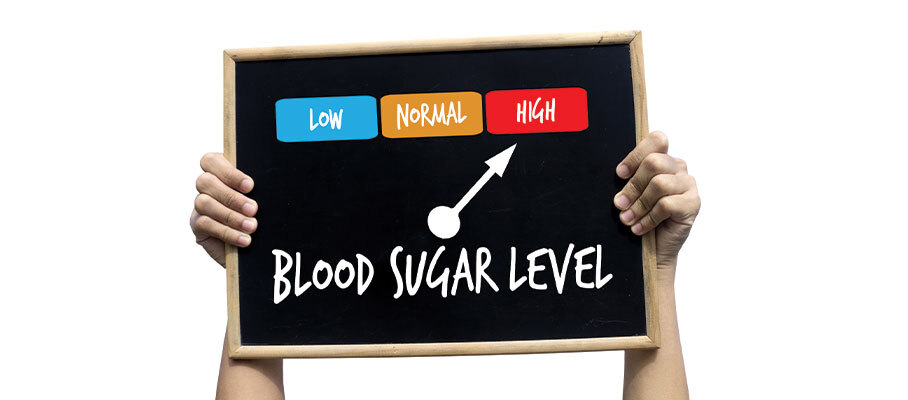blood sugar level normal
Blood Cells: Types and Functions in the Human Body
Can you believe that just two cells, the sperm and ovum, differentiate into almost 100,000,000,000,000 cells to make up your body? And while it may seem excessive, every single cell has its function. The cell is the simplest form of life, and blood cells are the most vital as they are primarily responsible for transporting nutrients and oxygen to the rest of the body and bringing waste materials and CO2 to be expelled from the body. Here is all you need to know about the different types of blood cells and why they are needed in the body. Blood Cells The body contains twenty to thirty trillion blood cells. These cells are seven microns in diameter and have the width of a spider-web silk strand. Your blood cells, skin, bone and nerve cells, are made of hydrogen, oxygen, nitrogen, carbon, magnesium, potassium, copper, zinc, silver, gold and numerous other elements that help their function. Types of Blood Cells There are three major types of blood cells: white blood cells, red blood cells and platelets. Here is a little more insight into the different types of blood cells. White Blood Cells These are the types of blood cells that help your body fight against infections. They make up your immune system and come in three different types. Granulocytes: neutrophils, basophils and eosinophils Lymphocytes: T lymphocytes and B lymphocytes Monocytes Red Blood Cells These are the body's oxygen carriers; they take oxygen from the lungs and transport it to the other cells in the body. The protein haemoglobin present inside the red blood cells is responsible for the transportation of oxygen. Platelets These are the types of blood cells that aid in the clotting of blood. When you get a cut or bruise, the platelets stick together and stop excess bleeding. Development of Blood Cells All the different types of blood cells in the human body start their journey as blood stem cells formed in the bone marrow. These stem cells then divide and multiply within the bone marrow and produce the other types of blood cells. The blood stem cell grows into any blood cell your body needs, including red blood cells, white blood cells or platelets. The bone marrow creates a large number of blood cells per second. A well-oiled and working system ensures that your body creates the right amount of each type of blood cell to be healthy. However, when there is a glitch in the system, the blood cells do not develop properly or rapidly multiply, causing diseases like blood cancer. Functions of Different Types of Blood Cells Red Blood Cells Your bone marrow creates 2-3 million red blood cells every second. These red blood cells are also known as erythrocytes. They are the most common type of blood cells. They usually circulate through the body for 120 days before they are removed by specialised cells called macrophages. In humans and other mammals, mature red blood cells do not have a nucleus; this gives the blood cells more space to store haemoglobin, the oxygen-binding protein that helps transport oxygen to the rest of the body. Red blood cells have a biconcave shape that helps increase the cells' surface area, allowing oxygen to diffuse across the surface. If a blood test shows low haemoglobin, you may be at risk of anaemia. In this case, you may appear pale because the haemoglobin gives the blood a red colour. You may also feel tired quickly and experience shortness of breath. White Blood Cells White blood cells comprise your immune system; they come in various shapes and sizes depending on their function. Some cells may include nuclei with multiple lobes, whereas others have a single round nucleus. One type of blood cell, granulocyte, contains multiple packets of granules in its cytoplasm. These white blood cells circulate through the blood till the body gives them a signal indicating it is damaged. In response, the white blood cells squeeze through the blood vessels and reach the source of the signal to help start the healing process. Anyone with a low white blood cell count will experience low immunity and get sick more often. The symptoms of the disease will also be significantly worse for those with low white blood cells. Different types of white blood cells have different functions; for example Neutrophils help digest bacteria and other pathogens. Monocytes are young white blood cells that can become macrophages if they leave the blood and migrate to the tissue. Lymphocytes are found in two main classes: B cells mature in the bone marrow, and T cells mature in the thymus gland. When these cells get activated, they can trigger different immune responses. Book CBC Test In Summary There are different types of blood cells in the body that carry out critical functions. A complete blood count (CBC Test) is a simple blood test that can help you ensure you have healthy levels of the different types of blood cells. It also checks your haemoglobin levels so you can identify the possibility of anaemia. Metropolis Labs offers a wide range of diagnostic tests and the option of at-home sample collection to keep track of your health from the comfort of your home. Check out the entire list of diagnostic tests and book yours today.
Confused About What May Be Giving You High Blood Sugar? This Might Help
Diabetes is one of the most common diseases of the present times. It affects the ability to maintain normal blood sugar levels in the body. The affected person has higher than normal blood sugar levels in blood. These elevated blood glucose levels over a longer period of time affects the normal functioning of various organ systems in the body. As expected, the blood sugar levels in the body change largely according to your meals. The diagnosis commonly requires examination of blood while fasting (Blood sugar fasting test) and 2 hours post meals. While the importance of maintaining a healthy diet and regular blood testing cannot be overstated, there are several factors both modifiable and non-modifiable more which determine the ease of maintaining normal blood glucose levels. Some of the most common factors leading to inadequate blood glucose control despite medications are Inadequate or irregular doses of medications which include both injectable insulin injections and oral medications. It remains to be the most common cause for high blood sugar levels in a diabetic patient on medications. There is progressive levels of insulin resistance in the body, which means insulin though present in sufficient amounts is not able to exert its effect of bringing glucose inside body tissues. It results in excessive levels of blood sugars despite normal levels of insulin in the body. This is more common in patients of type II diabetes. The blood glucose targets may not be achieved due to lack of adherence to a balanced diet, many times referred as diabetic diet. Consuming excessive amounts of carbohydrates, too frequent meals and diets poor in complex carbohydrates and proteins are the most common reasons. All these result in blood sugar levels which overwhelm the body’s capacity to produce insulin or the amount of insulin injected in the body. You are less active physically. Exercise helps the body utilise excessive sugar in the blood. Medications taken for other reasons may be adversely affecting your blood sugar levels like steroid, and diuretics. Levels of emotional and physical stress have been historically related to poor blood control levels. Physical stress in the form of any acute illness, common cold, injury and infection mounts to increase body cortisol levels which in turn increase blood glucose levels. Similarly, prolonged durations of emotional stress in the form of family or work related stress mount to increased levels on blood sugar levels. Think stress is affecting your overall health? Check your vitals with a comprehensive test package. Other uncommon reasons Hormonal disorders like Cushing’s syndrome causing excessive levels of natural cortisol hormone in the body, pancreatic diseases like infection, cyst, fibrosis or cancer affecting the body's ability to produce enough insulin. Pregnancy may cause excessive rise in blood glucose levels in some females. The condition is known as Gestational diabetes. It affects 4% of all pregnancies, and is due to production of excessive amounts of hormones promoting an increase in blood glucose levels along with decreased insulin sensitivity in susceptible females. Surgery or trauma may induce stress in body and may cause a temporary rise in blood sugar levels Maintaining blood sugar levels in a diabetic is difficult. But why should we stress on it anyway? Blood glucose is required by various body tissues for normal functioning. It acts as an important source of energy within tissues. But for glucose to enter into most tissues insulin, a protein secreted from pancreas is required. So while glucose in blood is essential for energy requirements of tissues, it is unavailable to body tissues in absence of insulin. Thus insulin has a central role in maintaining normal blood glucose levels and providing adequate glucose to tissues for storage and energy production. So it is either the lack of insulin or the resistance of the body to normal levels of insulin are commonly implicated in causing diabetes and are classically described as type I and type II diabetes respectively. Since excess blood sugar instead of reaching tissues remains in blood for prolonged periods this causes the symptoms and complications of diabetes. Symptoms in a patient and possible complications of poor blood glucose control The classical symptoms of diabetes are excessive thirst, hunger and frequent urination. However, in diabetic patient’s symptoms of excessive hunger, vomiting, breathing difficulty, abdominal pain and loss of consciousness suggest acute complications due to diabetes. Even in absence of these symptoms suggesting acute complications, prolonged periods of poor blood sugar control adversely affect kidneys, vision and peripheral nerves of the body. If you are affected with diabetes and are showing any of these symptoms we suggest you get your blood sugar fasting test done. Testing for blood glucose The Fasting blood sugar levels are determined by drawing blood after 8 hours of fasting, which means blood samples are conveniently drawn early in the morning. A fasting blood glucose of 126 mg/dl or more suggests Diabetes. However, for blood samples drawn 2 hours post meals blood glucose of 200 mg/dl or more suggest diabetes. Apart from these Glycosylated haemoglobin (HbA1c levels) of 6.5% or more suggest poor blood sugar control over a period of 2 to 3 months. Fasting blood sugar range of 100 to125 mg/dl suggests a state of impaired glucose tolerance, which means if blood glucose levels are not adequately controlled by means of lifestyle modifications a person may later develop diabetes. What can you do to maintain your blood sugar levels? Physical activity helps you lower your blood sugar levels. You may want to work with your healthcare provider to provide you with a detailed work out plan to achieve desired goals. Following your diabetic diet plan strictly. Basic understanding on how nutrients like carbohydrates impact your blood sugar may help you sustain your achieved goals. While diet remains the cornerstone of your diabetic control it is often neglected. It requires the help of a nutritionist to provide you with a well curated diet plan specifically designed to meet the demands of your body type and feeding habits. Maintain a healthy body weight. Avoid smoking. Refrain from excessive consumption of alcohol. Regular testing for blood sugar levels. Book your test here fasting blood glucose test.
 Home Visit
Home Visit Upload
Upload
















 WhatsApp
WhatsApp